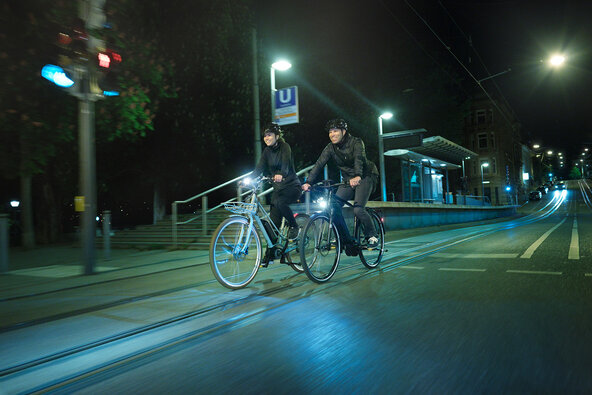
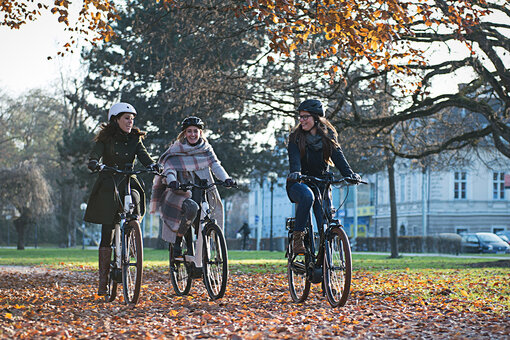
Proactive and safe
More and more people, particularly commuters, are using their pedelecs or bicycles no matter the season. Many enjoy riding in the fresh air, thus clearing their minds and reducing stress. By observing a few important rules, anyone can get through the cold winter months on their electric bicycle without any worries.
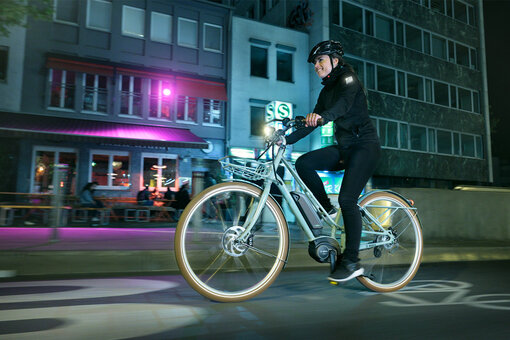
1. What should we do in order to be easily seen?
As it increasingly gets darker, it is important that eBikers are clearly visible to other road users. For this reason you should always make sure to use a headlamp and white front reflector, tail light with integrated reflector and red reflector, reflective strips on front and rear tyres or reflectors in the spokes and two yellow reflectors on the pedals. The intelligent COBI.Bike AmbiSense light system adjusts to the prevailing cycling situation with daytime riding, as well as dipped and high beam lights. In addition, bright clothes can help to attract attention. Reflectors, however, are still the most effective solution here: They increase your visibility significantly during winter and in the dark.
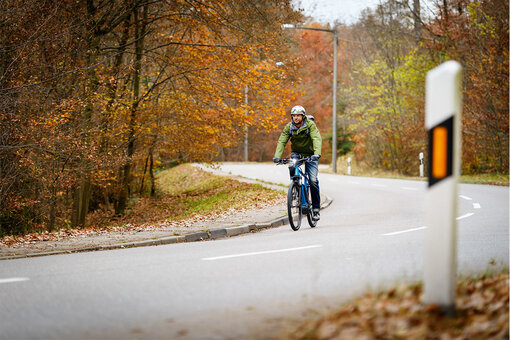
2. Preparing your eBike for winter
In wintertime, it is wetter, colder and darker than in the summer months. A comprehensive check of the bicycle, whether with or without an electric drive system, is always recommended. The bicycle light, brake pads and shifting system should be in perfect working order to be prepared for all weather conditions. The wet doesn't affect an eBike as the components are protected against the rain and splash water. To protect the battery when riding at temperatures below freezing, a neoprene cover is available from specialist retailers.
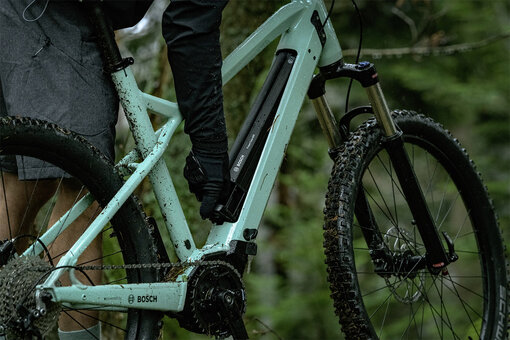
3. Correct care of the eBike and battery in winter?
eBikes should be properly maintained to ensure functionality and riding enjoyment. If the bike is heavily soiled by rain or snow, it is essential to wash off any mud and salt residues with soap and water. A drop of oil on the bicycle chain ensures your eBike runs like clockwork. You can find further tips for correct eBike care here. When it's freezing outside, the eBike battery's capacity may be reduced. We therefore recommend removing the rechargeable battery after riding, storing it at room temperature and only inserting it back in the eBike immediately before riding it again. Use a thermal protective cover to spare the rechargeable battery during longer trips. The same applies when charging the battery: Lithium-ion cells should be charged at room temperature.
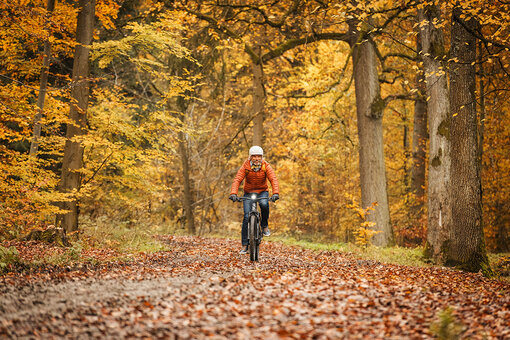
4. Safe braking
In adverse weather conditions, eBikers are well advised to start riding a little ahead of time and planning in more trip time than usual. Aggravated conditions such as wet leaves, slush or loose gravel also affect braking manoeuvres. Hazardous situations due to incorrect braking behaviour can be mitigated, for example through an eBike with ABS. This increases both the safety of eBikers and of other road users and provides more control during braking, thus making riding even in wintry city centres safer. A prerequisite here are correctly adjusted and well-maintained brakes.

5. Healthy and fit
Exercising, even in the cold air, keeps you fit, strengthens the immune system and protects against the winter blues. According to a study, the personal well-being of all-year cyclists is significantly higher. Cycling regularly, whatever the season, not only boosts happiness, but also means two fewer sick days per year. Even a short trip is sufficient to protect the body from pathogens. And who wants to be exposed to viruses and bacteria on a crowded train? Better to cycle away from the headcolds!
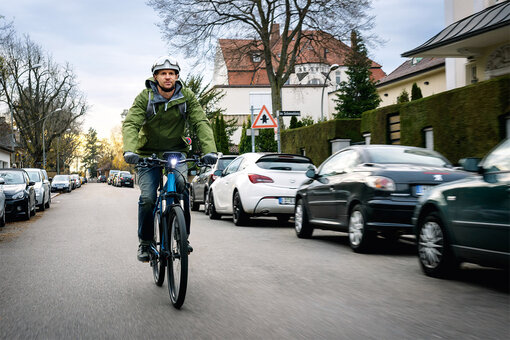
6. Safe and visible
Wearing appropriate clothing makes a winter cycling ride on the eBike really enjoyable. Instead of wearing just a thick jacket, we recommend dressing according to the “onion principle,” with several layers on top of each other. If possible, choose clothing that is breathable and waterproof to protect yourself against wind and rain. Your fingers get cold particularly quickly on the bike, so gloves are a must. Thin headbands or hats keep you warm and fit well under the helmet, which is also an absolute must in the winter. During the dark winter months, it is particularly important to wear light coloured and reflective clothing to be easily visible to other road users.